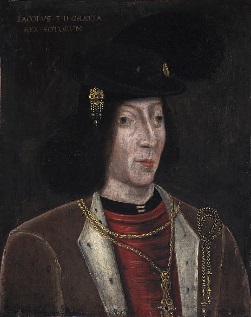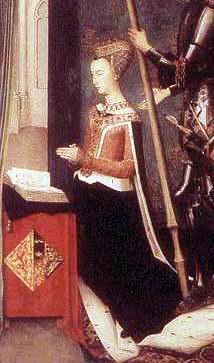The Mischief-Maker
James IV: Using Perkin Warbeck to Embarrass Henry VII
Chapter 5 : The Scottish Strategist
James IV was a remarkable man. The last, and, arguably, the greatest, of Scotland's medieval kings, his premier place among the Renaissance monarchs of the British Isles has long been overlooked by the English obsession with the Tudors. Yet he was, in every way, a worthy rival to Henry VII and he was determined, by the mid-1490s, to make sure that the king of England knew this.
Like Henry, James had gained the throne in violent and dubious circumstances. Despite the age gap – James was only fifteen when he came to the throne and Henry was twenty-eight – the two rulers had much in common. Both had grown up in difficult circumstances, outside the political systems they would come to govern. True, James had not spent many years as a fugitive in foreign lands, as Henry had done, but he was, to all intents and purposes, exiled from the court of his father, James III of Scotland.

How he had lost his father's affection is unclear, but seems to have been connected with the rebellion of his uncle, the duke of Albany and the pact that was probably made between James III's queen, Margaret of Denmark, and her brother-in-law, to save the life of her austere and difficult husband.
Far from being grateful, James III had taken against his wife and eldest son. The future James IV lived with his mother and two younger brothers at Stirling Castle, where his education continued, but he received little formal training in statecraft from the hands of his father. Perhaps this was just as well, since James III was hardly the best example for an aspiring King of Scots.

By early 1488, apparently fearful that his father might disinherit him in favour of his younger brother, Prince James was spirited away from Stirling in the middle of winter to join a growing band of rebels unhappy with his father's remote style of government. By the summer, James III and his opponents were armed and ready to fight, despite last-ditch negotiations. At the battle of Sauchieburn, close to Stirling itself, the two sides clashed and James III was killed fleeing the field.
The circumstances of his death are unclear – the Scottish parliamentary record noted laconically that he 'happened to be slain' – but he was probably deliberately targeted and murdered. This death sat on the conscience of the son but did not stop him from becoming a strong and successful king.
Like Henry VII, James IV faced uprisings in the first years of his reign and the nobles who had put him in power, though not unmindful of the need to ensure that he learned about kingship, were in no hurry to hand over the reins of government. James waited, watched and learned. But not even the most comely of ladies thrust in front of him by his calculating aristocracy could divert him for long. James intended to rule.
Highly intelligent, good-humoured (though he did not like to be crossed), physically brave and with a restless, wide-ranging intellect, James was to become the epitome of a Renaissance monarch. The Flemish imposter provided him with an opportunity to make mischief on a major scale.
